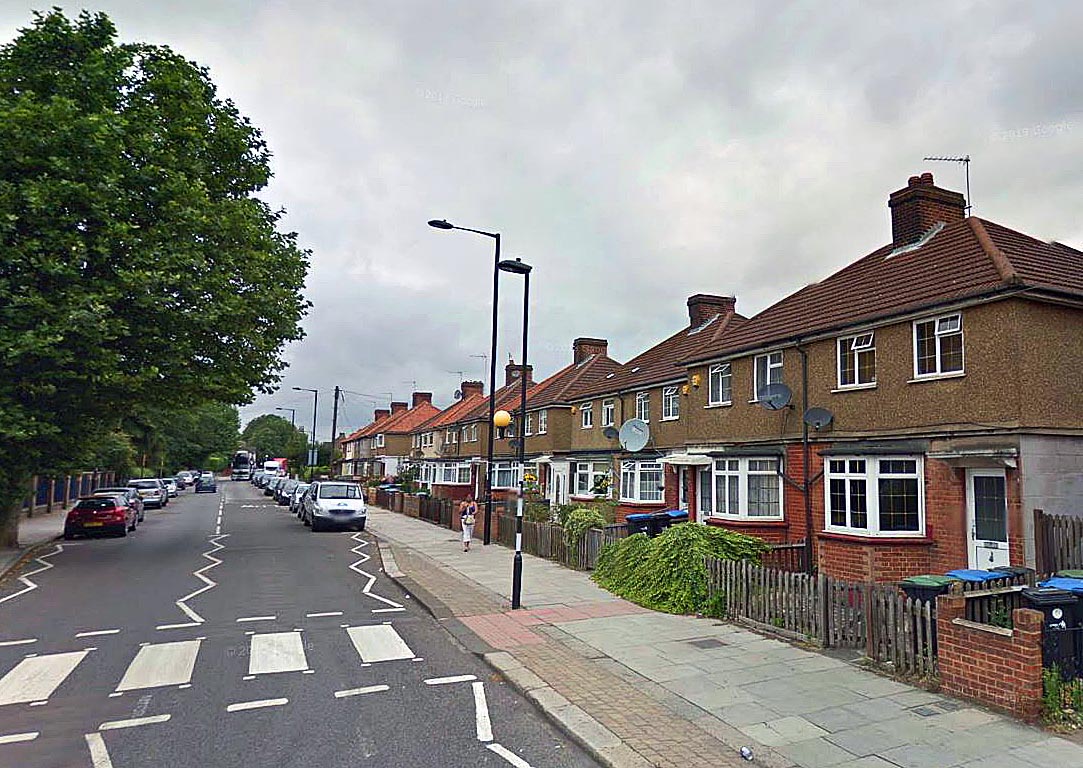The Enfield Poltergeist is one of the most famous and widely debated cases of paranormal activity, captivating the attention of researchers, journalists, and the public for decades. The events took place in a modest council house in Enfield, a suburb of North London, between 1977 and 1979. The Hodgson family, consisting of single mother Peggy Hodgson and her four children – Margaret (13), Janet (11), Johnny (10), and Billy (7) – claimed to experience a series of terrifying and unexplainable phenomena that many attributed to a poltergeist. The case remains controversial, with believers and skeptics debating its legitimacy to this day.
The story began in August 1977 when Peggy Hodgson reported hearing strange noises coming from her daughters’ bedroom. She initially believed the sound to be caused by moving furniture, but upon entering the room, she found the furniture had moved by itself. Janet and Margaret corroborated her account, claiming they had witnessed the chest of drawers sliding across the room. When Peggy attempted to move it back, she said it felt as though an unseen force was resisting her efforts. Over the following days, the family reported hearing knocking sounds, disembodied voices, and heavy thuds from within the walls of the house.
The situation escalated quickly, with claims of objects flying through the air, toys being thrown, and chairs toppling over. The activity became so disturbing that Peggy contacted her neighbors, the Nottinghams, for help. Vic Nottingham, described as a burly, no-nonsense man, reportedly entered the house and confirmed hearing unexplained banging noises. Convinced something strange was happening, Peggy sought help from the police.
Police constable Carolyn Heeps was among the first official witnesses. In her written statement, she claimed to have seen a chair slide across the floor without any visible force acting upon it. However, the police could not determine the cause and left, stating the matter was beyond their jurisdiction. Left with no resolution, Peggy turned to the press. The Daily Mirror sent a team of reporters, including photographer Graham Morris, who captured images of the alleged activity. Morris later described being hit by flying objects in the house, calling the experience “unnerving.”
The growing attention attracted paranormal investigators Maurice Grosse and Guy Lyon Playfair, members of the Society for Psychical Research (SPR). They became deeply involved in the case, spending long periods at the Hodgson home to document and analyze the activity. Grosse and Playfair witnessed and recorded numerous incidents, including objects being thrown, furniture levitating, and unexplained voices. They were particularly fascinated by Janet, who seemed to be at the center of the phenomena. She was often observed being thrown out of bed or levitating in midair, as captured in a series of controversial photographs.
One of the most chilling aspects of the case was the manifestation of a deep, gravelly voice that appeared to come from Janet. The voice identified itself as “Bill Wilkins,” a former resident of the house who claimed to have died of a brain hemorrhage in a chair in the living room. Janet’s ability to produce the voice while her mouth remained closed baffled witnesses. Audio recordings of the voice were made, and experts who analyzed them noted that producing such a sound for an extended period would have been physically taxing, especially for a young girl.
Skeptics, however, have questioned the authenticity of the events. Critics have pointed out that Janet and her sister Margaret admitted to faking some of the phenomena “to test the investigators.” Janet later clarified that while they occasionally fabricated incidents, the majority of the activity was genuine. Skeptics have also argued that the photographs of Janet levitating could simply show her jumping off her bed, as her posture resembles that of someone mid-jump.
Despite the skepticism, multiple witnesses supported the Hodgsons’ claims. Neighbors, journalists, and investigators reported witnessing inexplicable occurrences. Additionally, a local clergyman who visited the house described feeling an oppressive atmosphere and sensing a “presence.” Even skeptics like Anita Gregory and John Beloff, who investigated the case for the SPR, acknowledged that some phenomena were difficult to explain.
The case received significant media coverage, with headlines sensationalizing the events and dividing public opinion. The Daily Mirror and other outlets published dramatic accounts of the poltergeist activity, while some publications dismissed the story as a hoax. The controversy surrounding the case made it a cultural phenomenon, inspiring books, documentaries, and even films. The Enfield Poltergeist served as a basis for the 2016 movie “The Conjuring 2,” which fictionalized many aspects of the case.
In later years, Janet Hodgson revealed how the experience had impacted her life. She maintained that much of the activity was real and expressed frustration at being labeled a fraud. She also disclosed that she had undergone medical tests during the investigation, including a brief hospitalization at the Maudsley Hospital in London, where doctors evaluated her for physical and psychological issues. No evidence of mental illness or attention-seeking behavior was found.
The Enfield Poltergeist case continues to be a subject of fascination and debate. Supporters argue that the volume of eyewitness accounts and documented phenomena provides compelling evidence of paranormal activity. Skeptics counter that the family’s financial struggles and media attention provided a motive for fabrication. Regardless of one’s stance, the Enfield Poltergeist remains one of the most well-documented and controversial cases in paranormal history, capturing the enduring mystery of the unknown.

